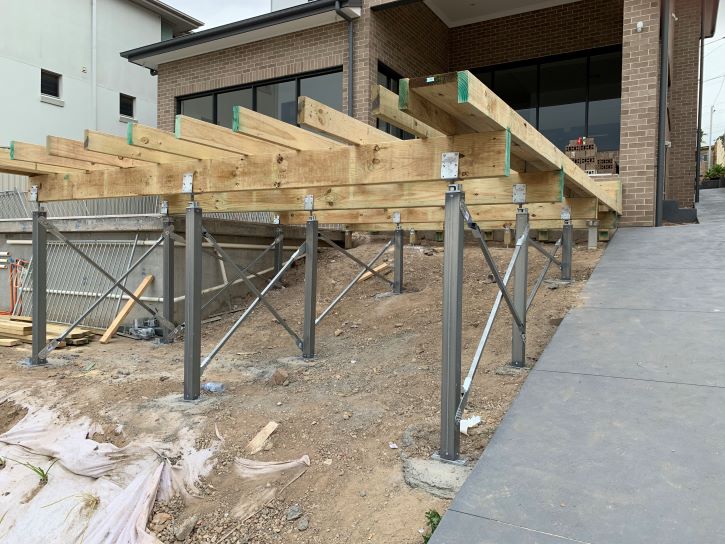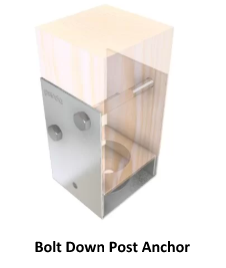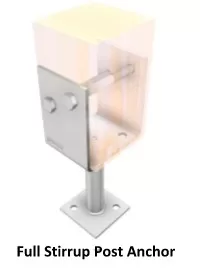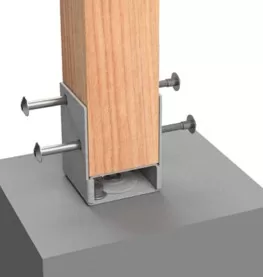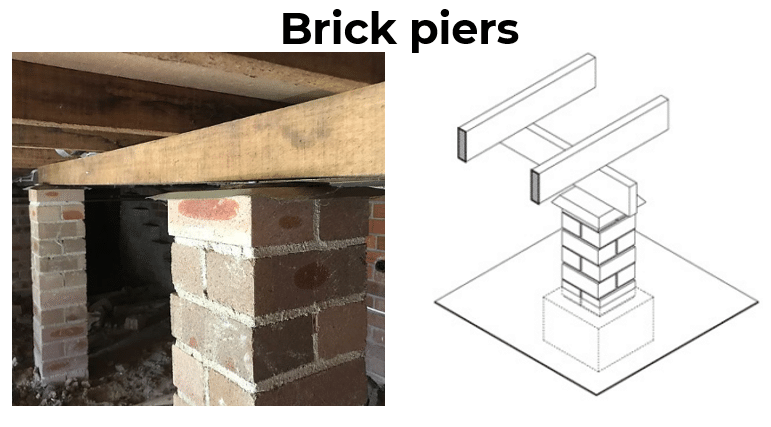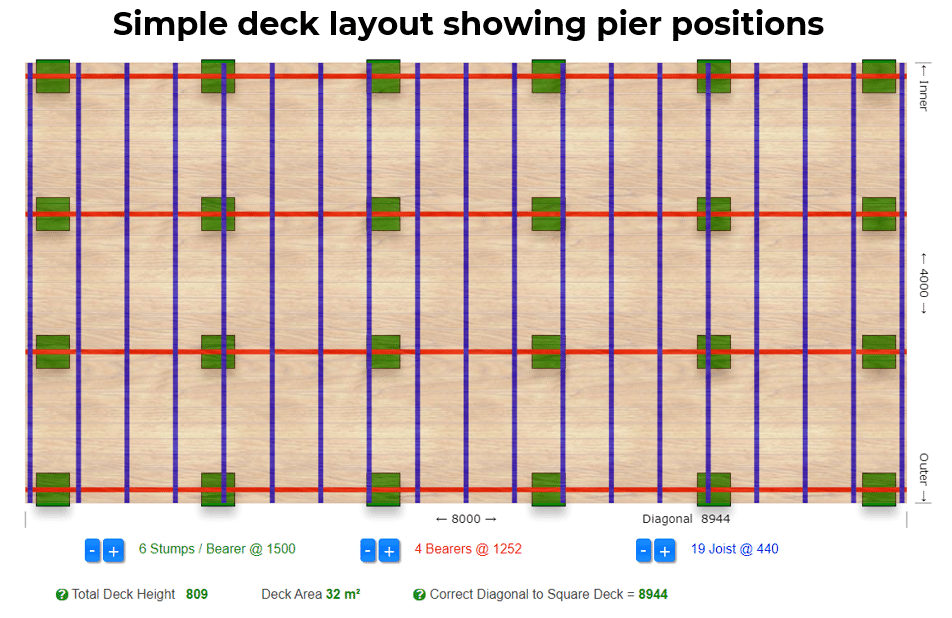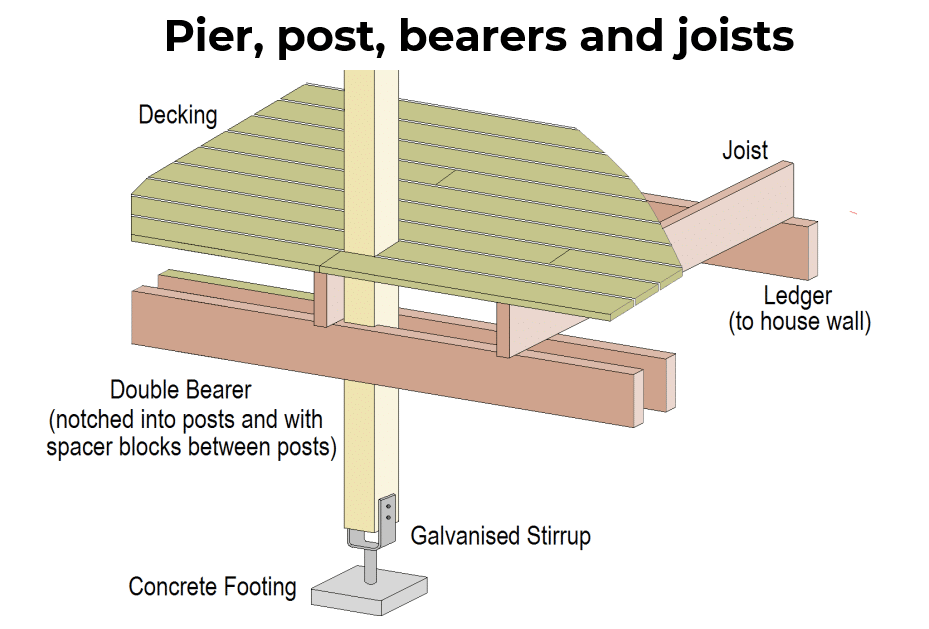
Deck Foundations Demystified: Footings vs. Piers vs. Posts – Which is Right for Your Project?
Are you planning to build a deck but need clarification on the best foundations option? You’re not alone if you’re feeling overwhelmed by the various choices. Deciding between footings, piers, and posts is a common dilemma for deck builders.
In this article, we will demystify the different deck foundations to help you make an informed decision for your project. We’ll explore the pros and cons of each option, considering factors such as soil conditions, deck size, and local building codes. Whether you’re a DIY enthusiast or hiring a professional, understanding the differences between footings, piers, and posts will ensure a solid foundation for your deck.
Join us as we dive into the world of deck foundations and explore which option is right for your project. By the end of this article, you’ll have the knowledge and confidence to choose the best foundation for your deck, creating a safe and sturdy outdoor space for years to come. Let’s get started!
SECTION 1: Understanding Footings for Deck Foundations
Regarding deck foundations, footings are one choice. Footings are concrete pads (long strips usually about 300/400 mm wide by 400mm deep) that support the deck posts. They are typically installed below or at ground level. Quite often, the footing will have a retaining wall built on it, which will then carry the deck load. Footings distribute the weight of the deck and its occupants evenly, ensuring stability and preventing sinking or shifting over time.
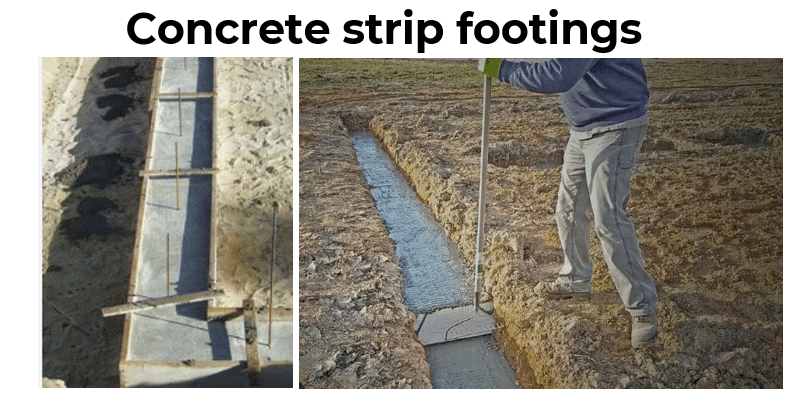
This application tends to be used more often on commercial sites.
There are two main footing types: poured concrete and precast concrete. Poured concrete footings are created on-site and require digging a trench, placing reinforcement, and pouring concrete directly into the trench. On the other hand, precast concrete footings are pre-made and can be easily installed by digging a hole and placing the precast footing.
Installing footings can be a labour-intensive process involving excavation, concrete mixing, and ensuring proper alignment. However, footings offer excellent stability and strength.
SECTION 2: Pros and Cons of Using Footings for Deck Foundations
Like any foundation option, footings have their own set of advantages and disadvantages. Look at the pros and cons of using footings for deck foundations.
Pros:
- Stability: Footings provide excellent stability, ensuring your deck remains level and secure for years.
- Load Distribution: By evenly distributing the deck’s weight, footings prevent overloading and reduce the risk of structural damage.
- Durability: Properly installed footings can withstand various weather conditions, including freezing temperatures, ensuring the longevity of your deck.
Cons:
- Complex Installation: Installing footings can be labour-intensive and time-consuming, especially if you do it yourself. It involves digging, concrete mixing, and precise alignment.
- Cost: Footings can be more expensive compared to other foundation options due to the materials and labour involved in their installation.
- Limited Mobility: Once footings are installed, they are not easily adjustable or movable. If you plan to relocate your deck, there may be better footing.
Despite these drawbacks, footings are a reliable choice for deck foundations, especially for larger decks or areas with unstable soil conditions.
SECTION 3: Exploring Piers as an Alternative for Deck Foundations
Piers are another popular option for deck foundations, particularly in areas with challenging soil conditions. Unlike footings, which distribute the deck’s weight over a larger area, piers concentrate the weight into smaller, more focused support points.
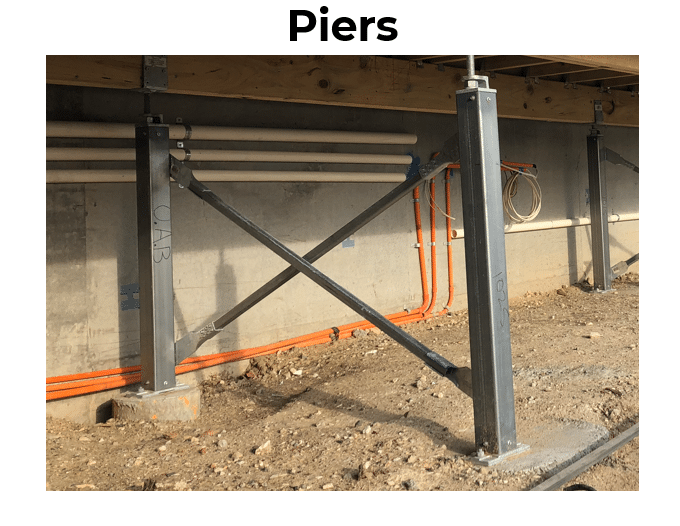
Piers are typically cylindrical or square concrete columns installed at around ground level. They are spaced regularly along the deck’s perimeter, providing a solid base for the structure. They are typically 400mm x 400mm wide by 500 mm deep. Their actual size will depend on the soil conditions and the load they have to carry.
Piers can be installed using various methods, including drilling holes by machine or hand and then pouring concrete into the hole. Most piers for residential decks will not need to have steel reinforcing installed.
The pier can then be connected to the deck in several different ways. Some of these will depend on your budget, while others may depend on the distance between the concrete pier and the bearer it is being attached to. The image above shows spantec posts, spantec feet and spantec heads.
Some of the different attachment options are:
Post stirrups (galvanised or stainless steel) and posts where the stirrup is attached to the concrete.
The posts can be timber or steel. Timber posts are usually H4 and above treated to prevent water and termite damage, while steel posts must be galvanised in order to avoid rust.
Bearers can also be suported by Klevaklip bearer supports. These have an an adjustable height section that makes the perfectly flat deck top secure and perfectly flat.
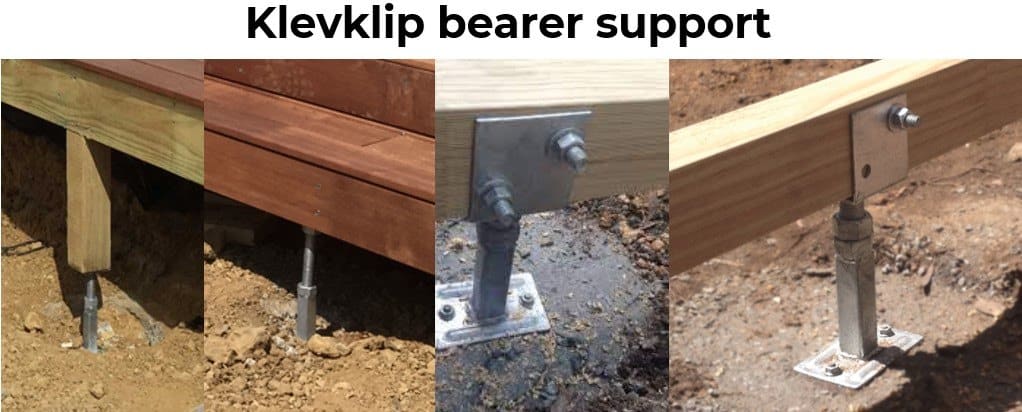
Brick piers with an ant cap cover can also be used (either on their own pier or on a strip footing)
Specialty brackets such as the Klevklip adjustable bearer support
SECTION 4: Advantages and Disadvantages of Using Piers for Deck Foundations
Piers offer several advantages and disadvantages worth considering when choosing the right foundation option for your deck.
Advantages:
- Versatility: Piers can be suitable for decks built on challenging soil conditions, such as clay or sandy soil. They can help mitigate issues like heaving or shifting caused by soil movement.
- Easy Installation: Piers can be quicker and easier to install than footings. They require less digging and concrete mixing, making them a more convenient choice for DIY enthusiasts.
- Adjustability: Piers offer some adjustments, allowing minor corrections if the deck settles over time. This can be particularly useful in areas prone to soil movement.
Disadvantages:
- Limited Load Capacity: Piers may not be suitable for larger decks or decks with heavy loads, as they concentrate the weight into smaller areas. It’s important to consult with a structural engineer to determine if piers are sufficient for your specific deck design.
- Maintenance: Piers may require periodic inspection and maintenance to ensure they remain structurally sound. This can include checking for cracks, erosion, or any signs of instability.
- Higher Cost: While piers can be less expensive than footings in some cases, they may still incur additional costs if specialised equipment (such as a mechanical auger) or techniques are required for installation.
SECTION 5: Evaluating Posts for Deck Foundations
Posts are a simple and cost-effective option for smaller decks or decks closer to the ground. Unlike footings and piers, typically buried in the background, posts are installed on the surface of a concrete base. This connection point is very important as an imprioperly installed post can start to rot less than 12 months after installation.
The bottom of the post has to have sufficient clearance from the concrete base and any garden bed or litter tha may accumalate between the post and the concrete pad, to ensure that moisture is not able to get into the bottom of the post.
If a steel post is being used, it must be galvanized if in an outdoor application. Allowance must be made for water and moisture to flow away from the bottom of the post so that the chance of rust forming is removed.
Posts can be made from various materials, including wood, steel, or composite materials. They provide vertical support for the deck structure and are often used with beam systems to distribute the deck’s weight evenly.
Ensure you check the BCA for the post material and size to ensure it can carry the required load. This is particularly important for balcony decks and decks that are on sloping sites.
SECTION 6: Comparing Posts to Footings and Piers for Deck Foundations
While posts offer simplicity and affordability, they may only be suitable for some deck projects. Let’s compare posts to footings and piers to understand their strengths and limitations.
Strengths of Posts:
- Easy Installation: Posts are relatively easy to install, making them popular for DIY enthusiasts or small deck projects.
- Cost-effective: Unlike footings and piers, posts are generally more affordable, especially using wooden poles.
- Versatility: Posts can be used for decks closer to the ground or with minimal weight-bearing requirements.
Limitations of Posts:
- Limited Stability: Posts may offer a different level of stability than footings, particularly for larger decks or decks in areas with unstable soil conditions.
- Maintenance: Posts can be more susceptible to rot, decay, or insect damage, especially if made from wood. Regular maintenance and inspections are necessary to ensure their longevity.
- Height Restrictions: Posts may have height restrictions depending on local building codes. It’s important to check with your local authorities to ensure compliance.
SECTION 7: Factors to Consider When Choosing the Right Foundation for Your Deck Project
Choosing the right foundation for your deck project requires careful consideration of various factors. Here are some key aspects to keep in mind:
- Soil Conditions: Assess the soil conditions on your property, including soil type, stability, and drainage. This will help determine the suitable foundation option to prevent issues such as settling or shifting.
- Deck Size and Load: Consider your deck’s size and load requirements. Larger decks or decks with heavy loads may require more robust foundation options like footings or piers.
- Local Building Codes: Familiarize yourself with your area’s local building codes and regulations. Some jurisdictions may have specific requirements for deck foundations, including frost depth and load-bearing capacities.
- Budget: Determine your budget for the deck project, including the cost of materials, labour, and any additional expenses associated with the foundation option you choose.
By considering these factors, you can make an informed decision that ensures your deck’s safety, stability, and longevity.
SECTION 8: Step-by-Step Guide for Installing Footings, Piers, or Posts for Deck Foundations
Now that you better understand footings, piers, and posts, let’s dive into a step-by-step guide for installing each foundation option.
- Installing Footings:
– Excavate the trenches for the footings, ensuring they are at the correct level and comply with local building codes.
– Place reinforcement, such as rebar or post brackets, in the holes to strengthen the footings.
– Mix the concrete according to the manufacturer’s instructions and pour it into the holes, ensuring it is level with the ground (this is usually delivered by truck, so access needs to be considered.
– Allow the concrete to cure fully before proceeding with the deck construction.
- Installing Piers:
– Determine the spacing and location of the piers along the deck’s perimeter, considering the load requirements and soil conditions.
– Dig holes for the piers, ensuring they are at the right height and comply with local building codes.
– Pour concrete into the holes, ensuring they are level with the ground.
– Allow the concrete to cure fully before proceeding with the deck construction.
- Installing Posts:
– Determine the spacing and location of the posts based on the deck design and load requirements.
– Prepare the ground by level, creating a concrete base(pier) for the posts.
– Install the posts by attaching them to the surface or securing them onto the concrete base using appropriate connectors or brackets.
– Ensure the posts are plumb and level before proceeding with the deck construction.
- Installing brick piers:
– Determine the spacing (if going over a strip footing) otherwise, the concrete piers will already have been measured, dug and poured.
-A bricklayer will install the brick pier and finish it at the required height for the bearers.
-A galvanised steel strap embedded in the pier is often attached to the bearer to provide a solid and prevent bearer and deck movement.
-An ant cap is placed over the top of the brick pier to prevent white ant issues.
These steps will help ensure a solid foundation for your deck, regardless of your chosen option.
Conclusion: Choosing the Ideal Foundation for Your Deck Project
In conclusion, selecting the proper foundation for your deck project is crucial for its stability and longevity. Footings, piers, and posts each have advantages and disadvantages, and the choice depends on factors such as soil conditions, deck size, and local building codes.
If you’re building a large deck or dealing with challenging soil conditions, footings or piers may be the ideal foundation options. They offer excellent stability and load-bearing capacities, albeit with more complex installation processes.
Posts can be a cost-effective choice for smaller decks or decks closer to the ground. However, they may provide a different stability or load capacity level than footings or piers.
By considering these factors and following the step-by-step installation guide, you can confidently choose and install the ideal foundation for your deck project. Remember to consult with professionals, such as structural engineers or local building authorities, to ensure compliance with safety standards and regulations.
So, whether you decide on footings, piers, or posts, your deck will have a solid foundation to support many years of enjoyment and relaxation in your outdoor space. Happy building!
I’d like some more information

